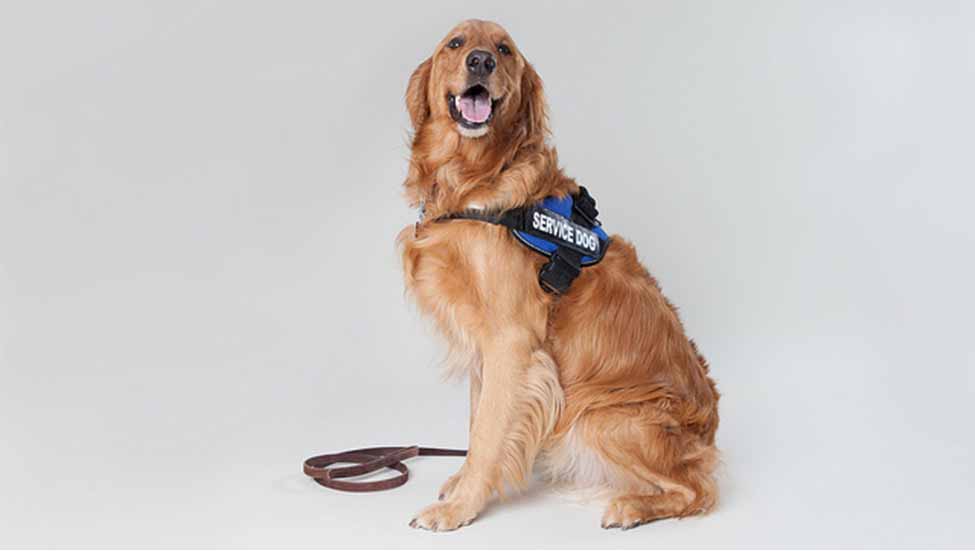Hey Ollie blog readers! We’re offering you an exclusive 60% OFF your starter box! Try now!
Their neatly affixed vests. Their determined gaze. Who can resist a dog in uniform? And while you admire them from afar (resist the urge to pet them, they’re on the job!), here are 12 betcha-didn’t-know-that facts about Canine’s Finest.
- Service dogs for people with mobility issues can turn on lights, push buttons on an elevator, pull their partner in a manual wheelchair, open doors, and even retrieve a wallet and offer it to the cashier.
- Hearing service dogs know the difference between a doorbell, alarm clock, smoke alarm, and even someone calling their person’s name–and can communicate that effectively.
- Hospital wards frequently utilize therapy dogs who offer comfort and companionship to distressed patients, reducing anxiety and blood pressure.
- Seizure assistant dogs are trained to smell changes in their partner’s blood, identifying warning signs of an impending seizure and notifying them with enough time to take precautions.
- Specialized tasks are taught to service dogs through highly specific training that can last months or years, and can begin in even weeks-old puppies.
- Any breed of dog can be trained for service work. (That’s right, chihuahuas, you too.)
- The cost of training a highly specialized service dog can be upwards of $25,000, a financial burden often (thankfully!) covered by charitable foundations.
- Autism assistance dogs provide a calming focus during times of sensory overload for their partners, as well as helping with physical tasks and offering emotional support.
- Mental health service dogs have shown amazing success with patients suffering from anxiety disorders, dissociative disorders, and even PTSD, providing companionship and a release of the brain’s own soothing chemicals.
- Allergy detecting dogs sniff out even trace amounts of life-threatening allergies for kids, offering them a chance to enjoy being kids and not worry constantly about unseen risks.
- Before being placed in their forever home, many service dogs need foster placement after leaving training. Foster families can help dogs keep up on their training with daily tasks and exercises. (Interested in volunteering?)
- Rescue dogs are finding a new life as service dogs through a foundation that trains them and places them with various disabled individuals, including children and military veterans.
The Ollie blog is devoted to helping pet parents lead healthier lives with their pups. If you want to learn more about our fresh, human-grade food, check out MyOllie.com.
Tagged As:

The nutrition your dog needs,
the food they want.

Enjoying our articles? Subscribe our Newsletters and get new articles directly to your inbox
You might also like
12 August 2025
5 MINS READ
Raw vs. Gently Cooked: Which Is Ideal for Your Pup?
As more pup parents seek the best fresh dog food for their companions, they may find themselves choosing between a raw diet and a fresh diet. While cases have been made for both options, let’s exa…
by Ollie Pets
12 August 2025
5 MINS READ
Why Human-Grade Ingredients Matter for Your Dog
A healthier, happier dog starts with the right food. That said, knowing which diet is best for your pup can be overwhelming at times. Understanding what human-grade means, why it matters, and how …
by Ollie Pets
12 August 2025
7 MINS READ
Spotlighting the Top Nutrients for Your Dog
Just like humans, your dog’s health depends heavily on the food they consume daily. Read on to learn more about essential nutrients for your dog’s health and explore how fresh, human-grade dog foo…
by Ollie Pets







